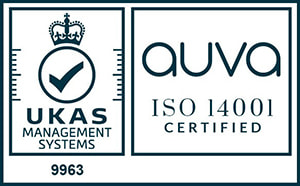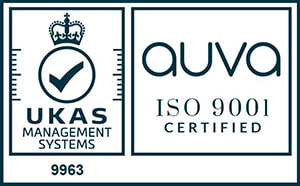ARE YOU AN ENGINEERING GEEK?
There was a time when being called a geek was a bad thing. Given the importance of making heating systems effective and energy efficient, the geeks are probably going to inherit the earth, metaphorically speaking. They can also charge more for their installations as they’ll stand the test of time economically and environmentally. Kevin Lever of JS Plumbing and Heating is one of those geeks and believes that some installations are failing to meet customer expectations because the basic heat loss calculation, the essential information that informs every decision, is often based on the size of the boiler that’s being replaced, rather than the individuality of the property and the needs of the people living there.
He believes phrases like ‘fit and forget’ and ‘combi slingers’ have no place in this industry as they not only do a disservice to heating engineers but underestimate the intelligence of the consumer. ‘The tables have really turned and these days customers are often better informed than we are! Environmental consciousness and energy saving drive their decisions and we need to be able to exceed their expectations and deliver a futureproof heating system every time.’
Here are just four examples where Kevin and his father Frank have designed heating systems to overcome the particular issues each property presented and stand the test of time:
#1 – 1960s 3-bed semi-detached property with single mixer shower and two basins
The customer’s Domestic Hot Water (DHW) load is minimal and seasonal heat loss was calculated to 7.4kW at -2°C.
We installed an Eco RF 24 with Honeywell Lyric T6 controls via OpenTherm. New radiators were slightly oversized to accommodate a lower system running temperature and futureproof the property for air and ground source heat pumps.
The boiler parameters were adjusted to suit the characteristics of the property and maximise system efficiency: pump overrun period to dissipate heat produced and minimise cycling; lower fan speed to achieve minimal output kW; adjustment of pump’s minimum and maximum speeds to suit the system; anti-cycle time increased to avoid hot starting and continued cycling; central heating start speed adjusted to 50% to avoid a surge of heat into the system which causes more cycling.
#2 – 1990s 3 bed detached property. Single bathroom with multi-head shower and large bath
The family’s DHW requirements were high, but there was no space for a cylinder. Property heat loss calculated to 6.2 kW at -2°C.
We installed an Eco RF 30, Pin 5* and a 50-litre thermal store to preheat the boiler’s incoming cold water to 30°C, achieving 12.5 l/min and the boiler only had to increase the DHW temperature by 20°C. This keeps the load of the boiler considerably lower during DHW demand, which saves energy. The thermal store can be heated via the boiler or solar PV.
The central heating is controlled with Honeywell EvoHome via OpenTherm. Digital thermostatic radiator valves allow the controls to determine not only the load required from the boiler, but the output temperature needed to achieve the desired room temperature.
Again, boiler parameters (minimum fan speed, pump speeds and cycle times) were adjusted to suit the system and the property.
*Pin 5 is the programmable relay that’s on the PCB of all Intergas boilers.
# 3 – 1600s working farmhouse. 4 bedrooms 2 bathrooms.
This property had very high DHW requirements as it’s also a working farm and hot water is needed in the stables.
Property heat loss calculated to a massive 13kW at -2°C.
Due to the age of the current system we decided to keep the central heating on an OV system and install an unvented DHW cylinder with a high recovery rate of 26kW.
The Intergas boiler can have two output temperatures so we can heat the cylinder with 80°C and run the central heating at lower temperatures. Having such a high recovery rate means we can run the cylinder on a Priority Domestic Hot Water (PDHW) basis and minimise the time the boiler is spent in non-condensing mode.
PDHW can sometimes have a negative effect on space heating. If we have no heat going to the central heating circuit for a prolonged period, due to a large consumption of hot water, users can start to feel a slight drop in comfort level. This was avoided by using the old cast iron radiators with a large thermal mass which retained heat for a prolonged period, maintaining comfort levels.
DHW is controlled via the boiler’s PCB and central heating is controlled by Intergas ComfortTouch and weather compensation.
The Eco RF 36 OV system boiler was installed with the maximum output to the DHW rated to 26kW.
#4 – 1920s large 8-bedroom home with 4 bathrooms
The property’s heat loss was calculated to 21kW at -2°C with a high DHW requirement.
The customer had been experiencing problems with the parallel twin boiler setup since its installation 10 years ago. It was mainly that the boilers were cycling constantly and unable to circulate the heat properly. The system comprised of two zones: heating and hot water.
We created three zones: upstairs, downstairs and DHW. Two Intergas HRE SB 18kW system boilers were installed as well as a low loss header and a Honeywell OpenTherm sequencer. This gave the system plenty of heat output if required, but also allowed the boilers to run independently and alternately for greater efficiency and an even run time on each boiler. Having two boilers also gives the homeowner peace of mind in case should one fail.
Heating and hot water are both controlled by Honeywell EvoHome via OpenTherm.






